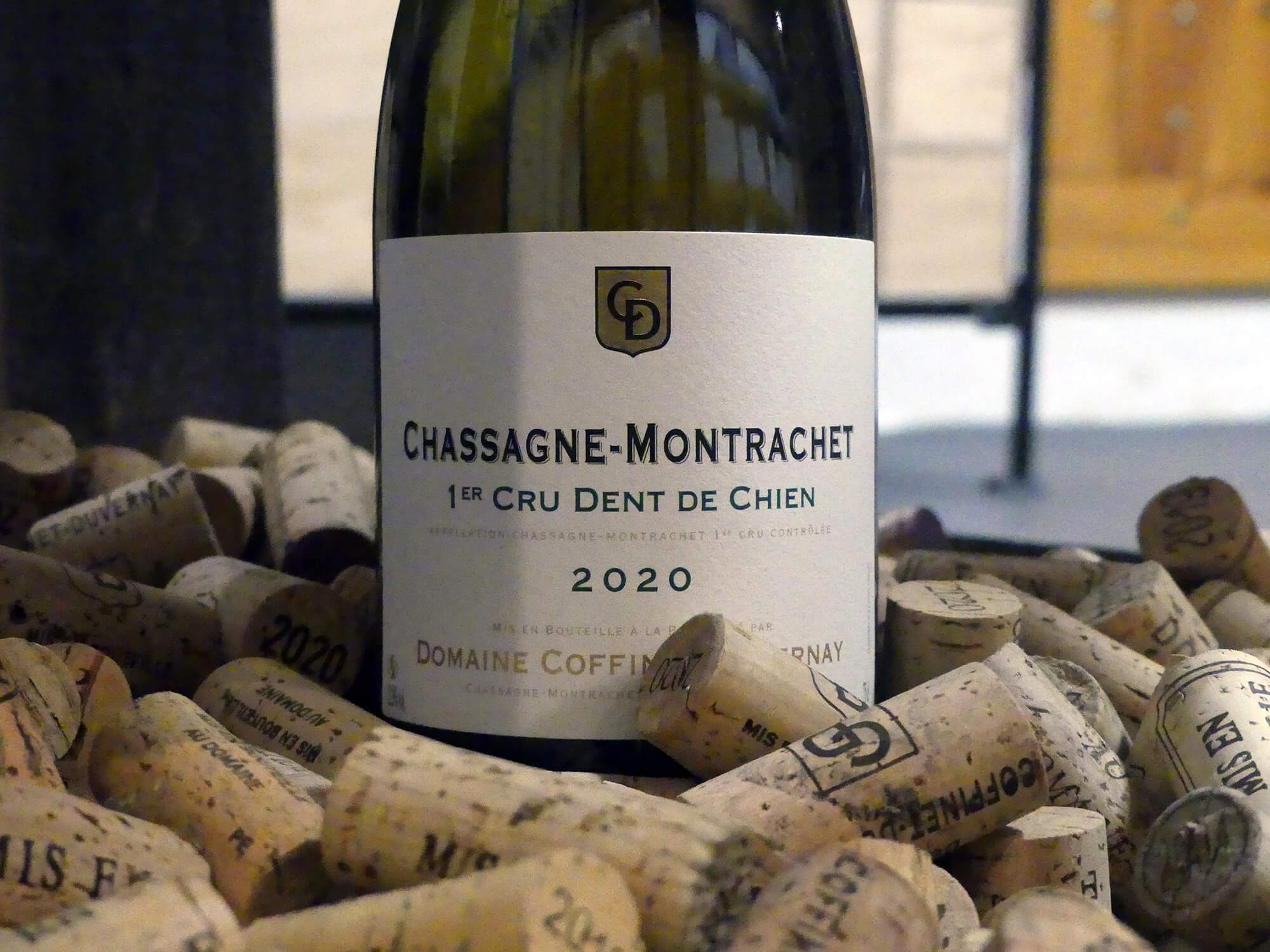
Domaine Coffinet-Duvernay
Presentation of the Domain Coffinet-Duvernay
DISCOVER THE WINES OF DOMAINE COFFINET-DUVERNAY
-
Domaine Coffinet-Duvernay: The essentials
- The origins of the family estate date back to the 1860s
- The Coffinet-Duvernay estate was born in 1989 for the marriage of Laura Coffinet and Phillipe Duvernay.
- Bastien, their son, and 5th generation winemaker, has been making the estate's wines since 2018
- The estate is located in Chassagne-Montrachet
- 6.5 hectares of vines exclusively spread over 14 Chassagne-Montrachet appellations
- 3 white village appellations
- 8 appellations 1er cru in white
- 1 grand cru appellation in white
- 2 village appellations in red
- Controlled yields, around 40 hectoliters per hectare in order to enhance the terroir
- No certification, uses sustainable viticulture practices, similar to the specifications for organic approval, but the estate does not want certification
- Whole harvest
- Aged in oak barrels between 12 and 18 months, with 25% new barrels. Barrel turnover every 4 years.
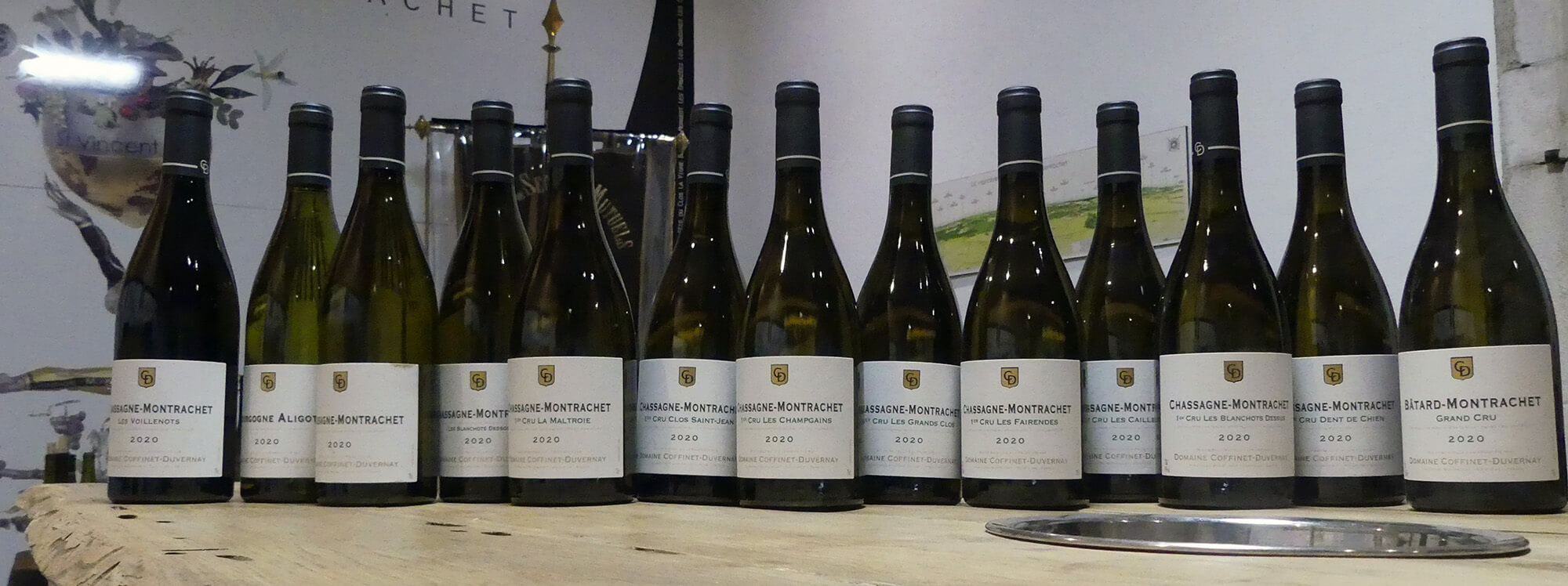
.
-
History of the estate and the Coffinet-Duvernay family
The Coffinet-Duvernay estate is a family estate established for a very long time in the commune of Chassagne-Montrachet, their origins dating back to the 1860s.
Formerly known as Domaine Fernand Coffinet, which was first bottled in 1947, the estate has continued to evolve and refine its work over the years and generations of winegrowers. And we can say that the Coffinet family has viticulture in its blood, since several generations of winegrowers have succeeded one another in the family.
At the end of the 1980s, Fernand and Cécile Pillot (sister of Paul Pillot) decided to retire and share the family estate between their two children, Laura Coffinet and Fabienne Coffinet. From this separation, two different estates were founded. Domaine Morey-Coffinet, resulting from the union of Fabienne Coffinet and Michael Morey, and on the other side, Domaine Coffinet-Duvernay, born from the union of Laura Coffinet and Philippe Duvernay in 1989.
Bastien, the son of Laura and Philippe and 5th generation winemaker, decided in 2012 to join this family epic after his studies at the Beaune wine school. By dint of hard work, he took the lead in winemaking from 2018 in order to continue the family traditions of the estate.
-
The philosophy of the estate
We can simply summarize the philosophy of the Coffiney-Duvernay and Bastien estate in two points:
- Preserve the typicity and flavors of the wines from his parents' estate
Himself a big fan of his father's wines, he wishes to perpetuate the legacy, the style of the estate, so that his wines keep the same typicity and flavor. However, given the climatic conditions of recent years, he was forced to review his approach and his way of working in the vineyards and in the winery in order to preserve the brand of the estate.
- Respect the life and the terroir of each of its vines by applying logic and common sense both in the vines and in the cellar
For Bastien, the key word is "Logic", doing useful and simple things, letting nature take its course, but always remaining in control and respecting the terroir. Owning only vines in Chassagne-Montrachet, it is essential for him that each of his wines breathes the terroir. He does not want all his wines to be uniform, smooth, that they all have a pronounced woody taste, reduced, ... On the contrary, he wants each of his appellations to be unique, have their own identity, with their advantages and their defects. . This philosophy also applies to the typicity of each vintage, which is also very important to Bastien.
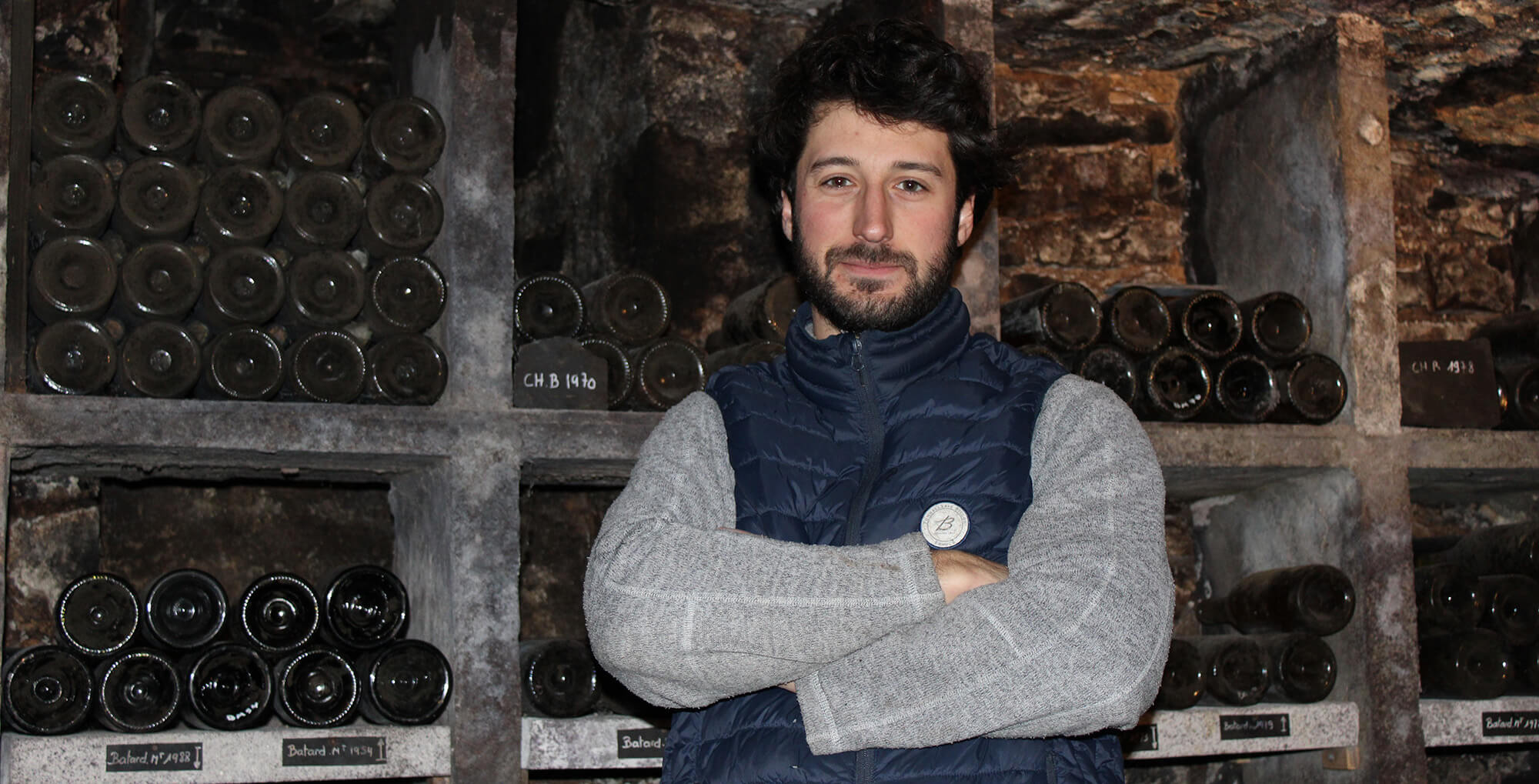
-
The management of the vines of Domaine Coffinet-Duvernay
Soil management
Wishing to let nature express itself as much as possible, and to respect the living, the Coffinet-Duvernay estate does not use any chemical products for weeding. The land is lightly plowed with a light Centaur-type tractor so as not to compact the soil too much and plowing with a so-called Canadian system, which allows plowing on the surface without being too deep (between 5 and 10 cm deep on average).
Currently Bastien for experimental purposes, has decided to leave some grass in the vines to fight against the high heat and droughts of summer that we have encountered in recent years.
Cutting of vines
The pruning of the vines is classic, Cordon pruning for the reds and Guyot pruning for the whites.
The estate does not strip the leaves and trims their vines quite high (about 1.3 to 1.4 meters), this allows the plant and its fruit to be protected as much as possible in the event of strong sun and also to optimize the photosynthesis of the plant. A light defoliation can be carried out in case of risk of disease or in the context of the use of organic contact treatment products.
Treatments
Always maintaining the philosophy of the domain, "to respect the living, and let nature do as much as possible, but keeping a slight control in order to avoid problems", the domain uses the least possible treatments, only organic. Bastien is fortunate to have all of the estate's vines grouped under the same appellation, which allows him to be very close to his vines, to monitor them every day and to intervene only when necessary.
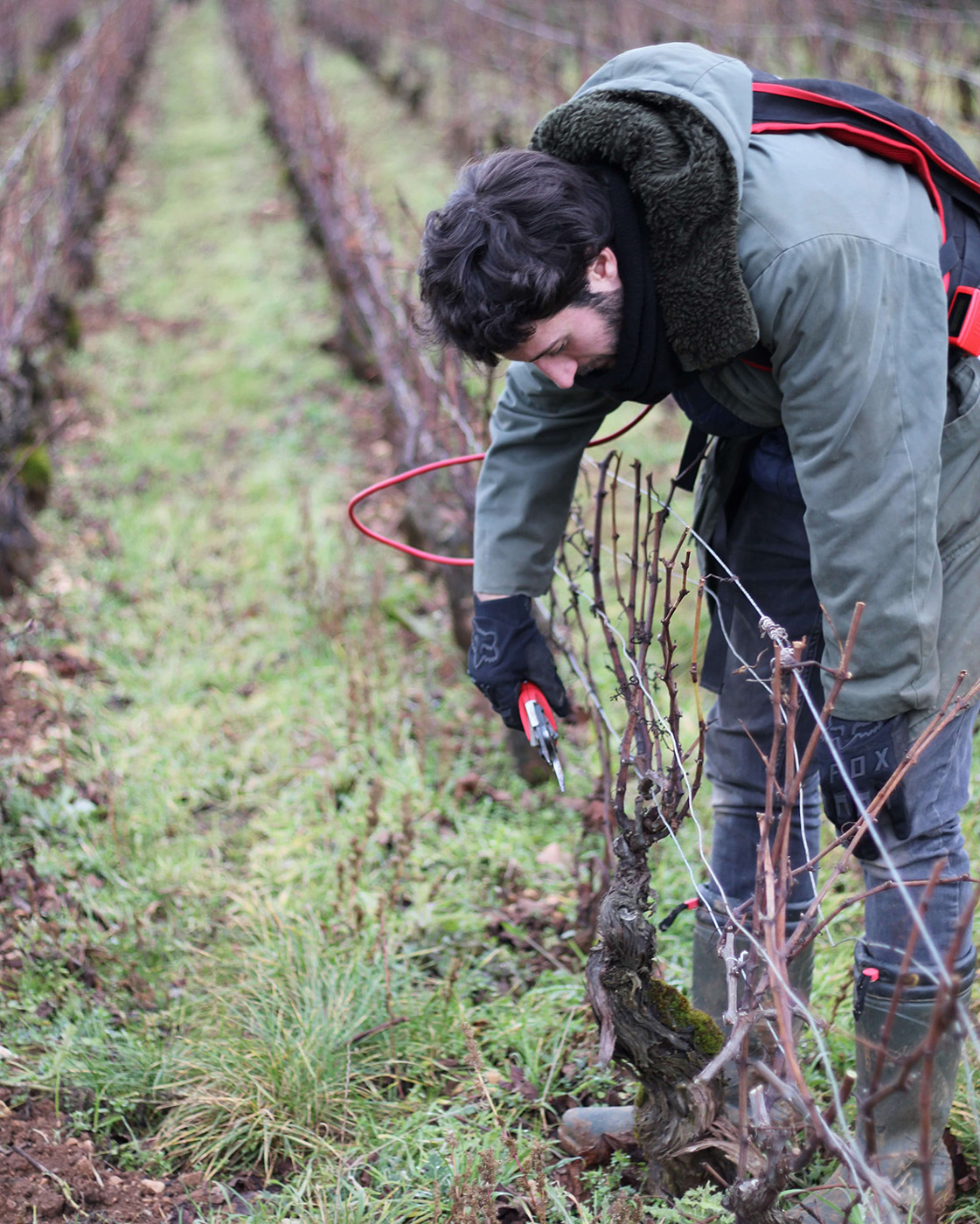
-
Winemaking method
For white wines
All the estate's vines are harvested by hand, using small 30 kg crates. The grapes are sorted directly on the vine.
The grapes are then poured directly into a pneumatic press, which gently presses the grapes for 2 hours at a pressure of 2 bars, until the pomace is dry at the end of the pressing. For Bastien, “Everything in the grape is worth taking”.
The juice is then transferred to stainless steel tanks for 1 night before being settled. The amount of settling depends on the year and the quality of the sludge.
The juice is then transferred to oak barrels to begin fermentation using only indigenous yeasts. In keeping with our “laissez-faire” philosophy, the barrels are not heated to initiate fermentation (except in exceptional cases).
Barrel ageing lasts around 12 months for the villages and 16 to 18 months for the 1er crus and grands crus. Bastien has decided to reduce the proportion of new barrels (between 20% and 30%), and uses barrels with a light toast to leave less mark on the wines, especially in warm vintages.
Once ageing is complete, the wines are drawn off with the lees (since the 2021 vintage) in stainless steel tanks for 2 months before bottling. The wines are not fined (except in exceptional cases) and are not filtered.
For red wines
The vinification between the whites and the reds differs little beyond the specificity of each. The maceration of the grapes takes place for 10 days, light extraction, gentle punching down at the end with pumping over only when necessary. The wines are never fined or filtered.
Since 2022 Bastien has decided to switch to 30% whole bunches in order to bring a little freshness to the wine while preserving its character.
All the cuvées are then blended, but if some have faults, they can be set aside.
DISCOVER THE WINES OF DOMAINE COFFINET-DUVERNAY
-
The vines of the Coffinet-Duvernay estate
White wines
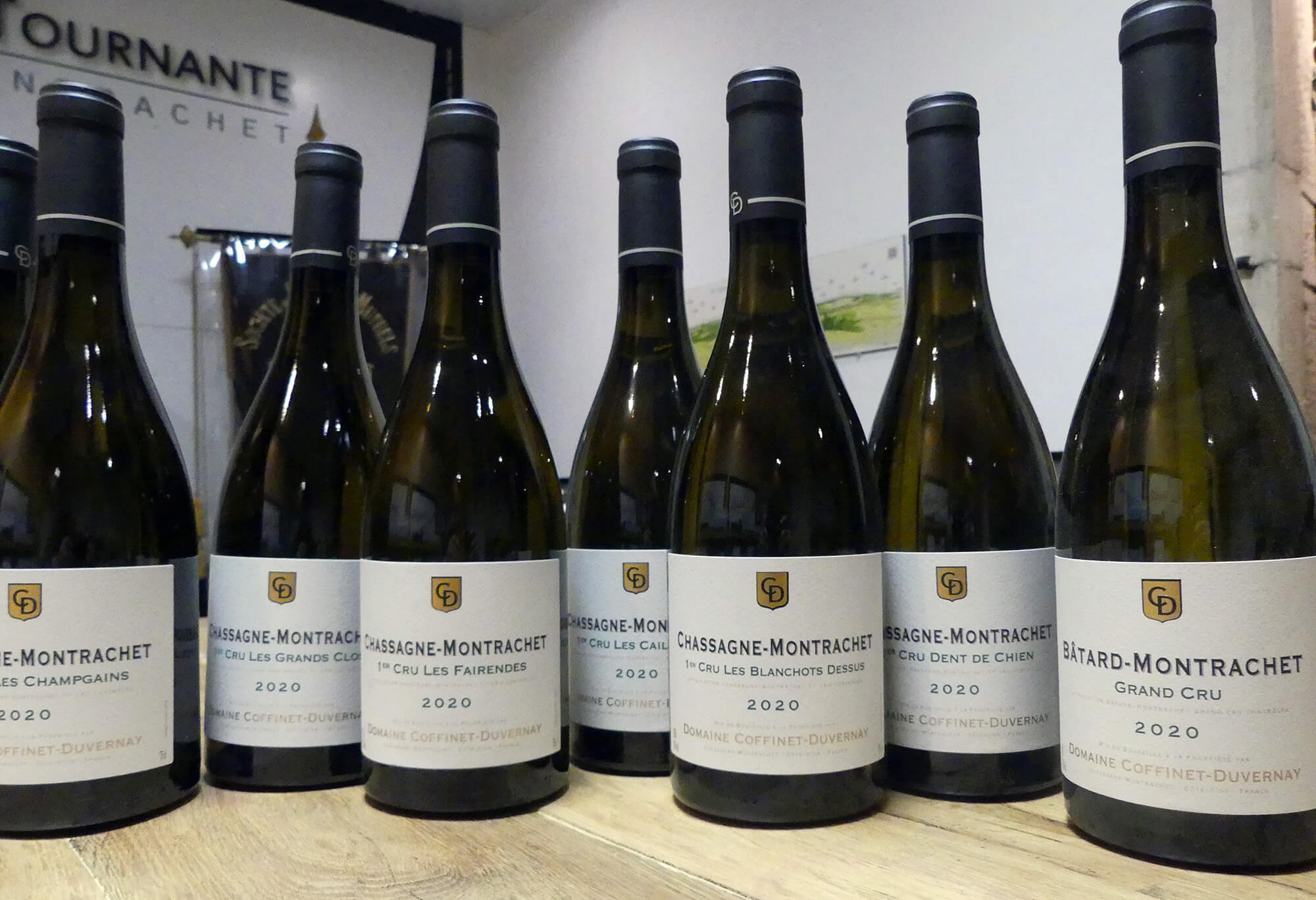
Aligote
Aligoté from the Coffinet-Duvernay estate comes from plots of vines located at the bottom of Chassagne-Montrachet. They are considered old vines since they are over 60 years old on average. They are pruned in Cordon, which is atypical for white and the yields are very low for an Aligoté, between 30 and 40 hectoliters/hectare (compared to 60 normally).
These low yields melt as the grapes mature quickly, are very concentrated and rich, which produces a magnificent bottle.
The estate produces around 1,500 bottles on average per year.
Chassagne-Montrachet village
This bottle is composed of a blend of 3 different plots. We find there “Les Houillères” located on the border with Puligny-Montrachet, “Les Voillenot” which are under the 1er cru “Maltroie” and “Les Masures” which are just under the 1er cru “Les Champs Gain”. The blend is made in equal parts, 1/3 of each plot. The vines are on average 40 years old but some were recently replanted 15 years ago
The estate produces around 3,000 bottles on average per year.
Chassagne-Montrachet Les Blanchot Dessous village
Although this appellation is a "simple" village, the grapes for this vine come from a plot located just at the end of the emblematic "Criots-Batard". As you will have understood, the terroir of this village appellation is exceptional. The vines planted there are old with an average age of between 60 and 70 years. Yields are low, between 30 and 40 hl/ha compared to the 57 authorized.
The estate produces around 3,500 bottles on average per year.
Chassagne-Montrachet La Matroie 1er cru
The estate has two different plots of this appellation, one of which is located directly in the garden of the estate. This generally ripens faster than the other plots because it is protected and enclosed by walls. The vines there are on average 50 years old and yields are always under control. About 40 hl/ha against the 55 authorized.
The estate produces around 1,200 bottles on average per year.
Chassagne-Montrachet Les Champs Gain 1er cru
This plot is located at the end of the “Champs Gain” when we leave the village, next to the “Fairendes”. It is stuck to the appellations "La Maltroie" and "Les Caillerets" and has a very rich terroir. The vines planted there are on average 50 years old and yields are always under control.
The estate produces between 1 and 2 pieces per year, i.e. 600 bottles.
Chassagne-Montrachet Clos Saint-Jean 1er cru
This appellation located on the heights of Chassagne-Montrachet is generally better known for its red wines which are the majority there. Planted in chardonnay, this gives us a floral and light white wine. The vines are 50 years old on average.
The estate produces around 900 bottles on average per year.
Chassagne-Montrachet Les Grand Clos & Les Fairendes 1er cru
These two plots are located in the "Morgeot" climate and are each positioned opposite to the climate but are very different. This is why the Coffinet-Duvernay estate has decided to make two distinct cuvées.
"Les Fairendes" is a fine, saline wine with lemony notes, which will be easy to drink when young, while "Les Grands Clos" is a more raw, rich and fleshy wine which will be more difficult to drink young. It is similar in taste to the appellation “Les Caillerets”
The estate produces around 2800 bottles on average per year for “Les Grands Clos” and 3000 bottles for “Les Fairendes”
Chassagne-Montrachet Les Caillerets 1er cru
This plot is located on the heights of the village, more exactly on the place called "Les Combards", it is the highest plot of the appellation, surrounded by woods, which generates a micro climate. The vines are planted in very stony soil and are very old, around 80 years old. They are cordon pruned, which is normally a size more suited to Pinot Noir.
The estate produces around 1,500 bottles on average per year.
Chassagne-Montrachet Les Blanchots Dessus 1er cru
This plot is very well located and enjoys a terroir that is both magnificent and complex since it is planted on the scree of Montrachet, THE most sought-after Grand Cru of the Côte de Beaune. The vines are on average 40 to 50 years old.
The estate produces around 1,800 bottles on average per year.
Chassagne-Montrachet Dent de Chien 1er cru
This vine also enjoys an exceptional terroir since it is located in the extension of the "Montrachet", just above and is at the same level as the Grand Cru Chevalier-Montrachet. The plot is positioned against a cliff and faces south. The soil is shallow and due to their exposure, the vines suffer very quickly from the heat. It is for this reason that the “Dents de Chien” are harvested earlier each year than the other vines of the estate. Its location makes it a very mineral and ripe wine.
Yields are low, the estate produces about 600 bottles on average per year.
Bâtard-Montrachet Grand Cru
This parcel of Grand Cru vines is located along the Bâtards, it starts from the “Vide Bourse” climate and goes up to the emblematic “Montrachet”. The vines are on average 30 years old and planted on poor soil, stony but which requires little tillage because it is self-sufficient.
The estate produces around 600 bottles on average per year.
Red wines
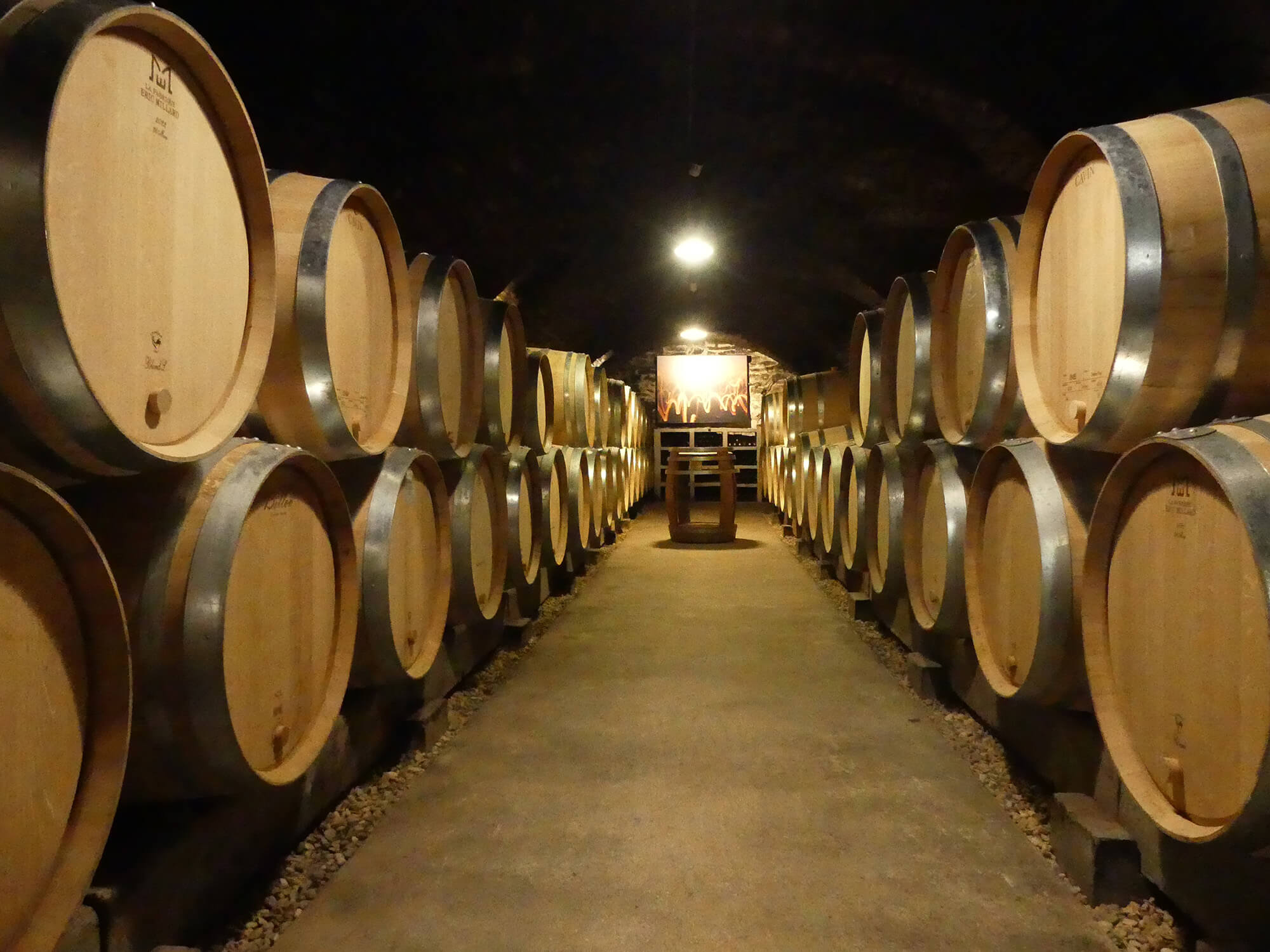
Chassagne-Montrachet
This is a brand new cuvée produced by the estate for the first time in 2021. It is composed of a blend of grapes from several plots of vines present in the lower part of the village of Chassagne-Montrachet.
Chassagne-Montrachet Les Voillenots du Dessus
This village appellation comes from a parcel of vines located quite close to the “Maltroie”. This is one of the highest plots, stuck to the village which is not a 1er cru.
The vines are on average 50 years old. They are installed on a rich, fatty soil and have a fairly low yield.
The estate produces around 1,200 bottles on average per year.
-
A word on wine aging
It is difficult, if not impossible, to generalize the aging of wines from the Coffinet-Duvernay estate. Each appellation and each vintage has its own characteristics. In general, the wines of the estate are tasted very well from their first year, but can be closed slightly for their second year. Bastien advises a minimum of aging of 3 to 4 years before tasting his wines. Regarding the aging potential, it can be long, the 1ers crus and grands crus can easily exceed 10 years and even much more if the storage and aging conditions are good.
DISCOVER THE WINES OF DOMAINE COFFINET-DUVERNAY
The entire Wvine team would like to thank Bastien and the Coffinet-Duvernay estate for their trust!
